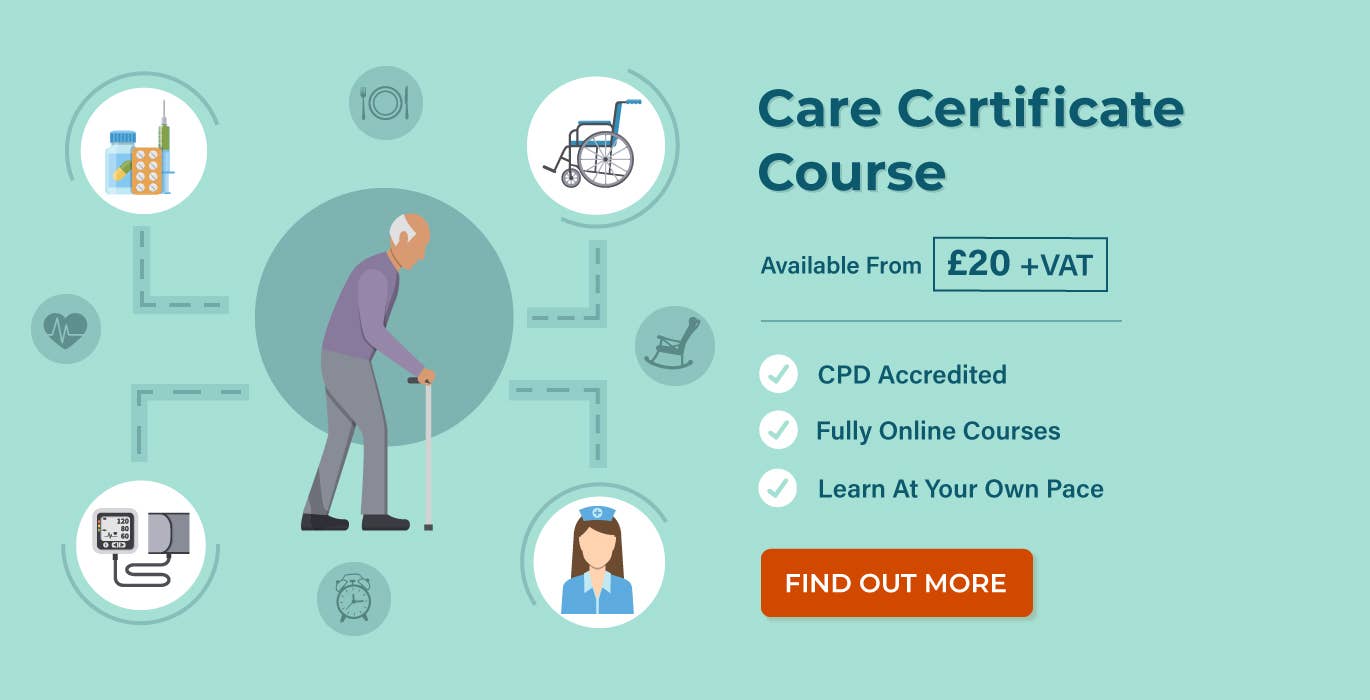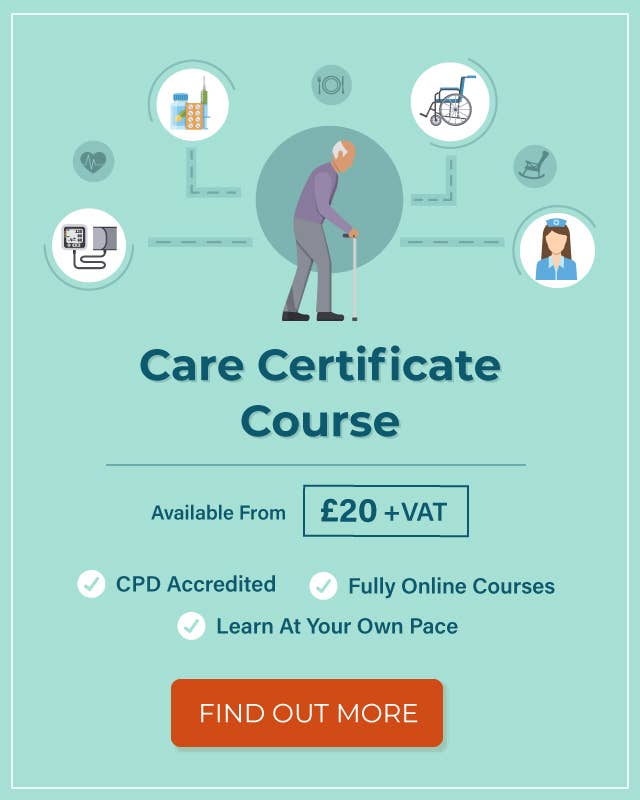what can staff nurses do to reduce conflict with patients and families?
Within a wellness and social care environment, whether you work in the sector or have a loved one requiring intendance, you tin find yourself in highly stressful and emotive situations. It is incredibly important for the wellbeing of the worker, service user and their families if there are practiced conflict resolution processes in place and any confrontations can exist managed calmly and finer.
Within this article nosotros will explain what conflict in wellness and social care is, providing examples of some scenarios that can present themselves in a health and social intendance setting, guidance on how to handle confrontation, and how to implement positive confrontation techniques.

What is Conflict in Health and Social Care?
Disharmonize is natural, we will likely all take experienced it to a greater or bottom extent in our lives. It is non always outwardly expressed and can, rather damagingly at times, simmer nether the surface. Conflict can exist described equally the serious incompatibility of 2 or more opinions, needs or drives or a serious and often protracted disagreement or argument. When conflict is expressed outwardly information technology can atomic number 82 to confrontations between the opposing parties and nosotros volition look more into this later in the article.
There tin be numerous factors that lead to conflict and a health and social care setting can join a diverse grouping of people in a notoriously challenging environment. It is therefore likely at that place will be differences in opinions and beliefs, incompatible personalities, varying expectations and power struggles.
At that place are additional concrete and emotional pressures that tin enhance any crusade of disharmonize within wellness and social intendance settings. Staff are by and large working in roles that place many demands on their time and resource. Those utilising the services are frequently heavily reliant on the care and attention of staff, with those suffering ill-wellness or reduced independence often feeling broken-hearted. Family unit members can too have their own opinions and expectations regarding their loved ones' intendance. The combination of all these factors increases the potential for conflict.

Types of Disharmonize in Healthcare
At that place are many variations of disharmonize types, some more specific to certain environments than others. Here nosotros will expect at five causes of conflict with examples of how they can chronicle to a wellness and social care setting.
- Data Conflicts – when there is different or bereft information bachelor or a disagreement on what information is relevant. This can exist a very frustrating situation in health and social care because it can heavily impact on the care provided and those implementing it. Lost or missing medical notes, information missed off a prescription and poor handovers are all common examples.
- Value Conflicts – incompatible belief systems or trying to impose personal values onto others. A health and social intendance worker may concord a set of values on the standard of care they believe they should exist able to deliver, but time constraints and lack of resources may mean they are unable to achieve this. Values do non tend to be negotiable and this can ofttimes pb to conflict between the fellow member of staff and whoever they deem responsible.
- Involvement Conflicts – contest over needs or resources such as money or time. Service users, patients or their relatives may feel their needs are more than necessary than those of others, and they may feel time given by staff is not existence justly divided. This tin can cause conflict between several parties.
- Human relationship Conflicts – negative emotions, distrust, misconceptions or poor advice betwixt people. The reasons for such conflicts can be many, as stressful environments and emotional situations tin brood these emotions very easily.
- Structural Conflicts – Oppressive behaviour toward others, a lack of resources or opportunities and the construction of an organization. Health and social care organisations tin can have a high turnover of staff; when working in a demanding role, ofttimes with staff shortages and high demand, it can be very easy for disharmonize to arise if they begin to feel undervalued, under-resourced and are not provided with back up and opportunities for progression.

Regardless of cause, conflicts can be detrimental to morale, productivity, staff retention and the standard of care and wellbeing of those utilising health and social care services. Every effort should exist made to preclude, minimise and resolve conflicts. From aiming to reach a satisfactory solution in which all parties are happy, the event of upstanding dilemmas can occur when it is merely non possible to satisfy everyone.
An example of the link betwixt conflict and ethical dilemmas could be; a family member who is appointed to brand medical decisions on behalf of the patient is demanding everything is done to keep their loved one alive. As a medical professional the opinion is that information technology is time to withdraw life support and doing more than could cause pain or discomfort without proving benign.
Different Conflict Scenarios in Healthcare
To put some of the conflict types we have discussed into context, here are a couple of conflict scenario examples:
A healthcare assistant is working a busy night shift on a infirmary ward. The other healthcare administration are currently in a side room with a patient who requires two members of staff. Several of the patients are pressing their phone call bells at one time. The healthcare assistant answers the outset two bells and can still hear a bell call. As they dash from identify to identify they notice two nurses at the nurses station laughing together. Equally they pass a nurse asks if they could please answer the bong every bit it has been going for a while.
This situation could appear to be a structural conflict every bit the healthcare worker may feel oppressed and frustrated by staff in a higher position. But it could every bit be a relationship conflict – a simple misconception of the situation. The nurse may not be aware that the other staff are decorated with some other patient, or that the phone call bong sound was in fact numerous. In this situation the healthcare worker could but communicate openly, explain calmly and enquire for additional support if needed.
A intendance worker has only begun her day shift in a care abode post-obit a handover from the night staff. The handover mentioned a resident had a urine infection and had been presenting as very confused and kept trying to leave the premises, condign aggressive when they were prevented. They decided to allocate a member of staff to them to human action equally a distraction and monitor them. A family unit member of another resident noticed how much one to once they were receiving and began lament about favouritism.
This could be an example of an interest conflict equally the family member believes the attention was not justly divided. In this state of affairs a member of staff could request a private word to explicate. Addressing the issue would prevent any misconception and lingering resentment toward staff.
Whilst not a scenario as such, it seems worth noting here that many situations of confrontation and even aggression tin can occur about normally in a health and social care setting due to cognitive, behavioural or medical bug. Dementia, mania, infection, delirium, and autism are a few examples. These may exist managed through medications, restraint, and trained support workers and cannot all be successfully managed through positive confrontation techniques.
How to Handle Confrontations
We have looked at possible scenarios of disharmonize and confrontations you may confront and the factors involved. When faced with confrontations it is important to understand how to de-escalate the situation and try to reach a calm resolve. This is known as conflict direction or disharmonize resolution. The best way to manage conflict is to aim to preclude it or reduce its frequency or its intensity.
When practicing conflict direction you must identify and handle the conflict in a sensible, fair and efficient fashion. The skills required to practise this include effective communication such equally active listening, problem solving, staying calm and focusing on how to tackle the problem. Within this setting, emotions tin play a large part in confrontations, therefore compassion and empathy are oft required when managing the situation.
As a health and social intendance worker, do bear in mind the environment you are in when dealing with any conflict or confrontation. Do non air any grievances in front of service users, patients or their relatives. Go somewhere private and quiet to talk. If the confrontation is with a service user, patient or relative and it is non practical to move the state of affairs away from others, perhaps try screen off the surface area and talk in calm and quiet tones to limit the distress to others.

How to Handle Confrontation at Piece of work
If you are a health and social care worker and information technology becomes necessary to handle confrontation with colleagues, hither are a few steps to consider:
- Act and speak calmly.
- Effort to implement positive confrontation techniques.
- Yous can seek advice from a managing director or mediator or if appropriate just ask them for a chat.
- Choose a neutral space abroad from other colleagues, service users, patients and their families.
- Mind and clarify the issue on both sides.
- Work together to tackle the problem and seek advice if unable to practise so.
- Thank them for hearing you out.
How to Handle Confrontation with Family
Handling confrontation with the family unit members of a service user or patient would be approached in a similar way to colleagues. Practice call up they are often going through a hard time and if it is possible to prevent or avoid conflict so that may provide the well-nigh stable and calm surroundings all round. When that isn't possible and a resolve regarding someone'southward care or handling is required, these are a few additional things to consider:
- Human action and speak calmly.
- Be patient and understanding – they may need your empathy and compassion.
- Actively listen to understand their concerns and requests.
- E'er recollect a patient-centred arroyo to care and their rights.
- Evaluate a solution, which may require multiple parties and healthcare professionals.
- Clearly communicate information.
- Consider providing additional reading materials for them if existence more informed around certain topics would help them.
- Decide on a mutually acceptable solution together.

Positive Confrontation Techniques to Implement
Learning how to approach confrontation in a confident and positive manner tin exist very beneficial to wellness and social care workers, service users, residents and families. Hither are a few techniques to comport in mind:
- Avoid a antagonistic state of mind – you lot may feel you take been wronged, that yous are correct, and desire to make your indicate, simply remember the purpose is to attain a resolve to end the disharmonize on both sides.
- Acknowledgement – sometimes acknowledging the other person's signal of view and any mistake on your part is the get-go step to understanding.
- Be enlightened of emotions – emotions can play a large part in conflict. Be empathetic when needed and know emotions can brand an easily resolvable consequence seem much greater.
- Focus on the problem, non the person – remember addressing the problem is the key to resolving it. Do not be tempted to focus on the person equally they may feel attacked.
- Go along a calm and neutral voice – shouting or ambitious tones merely feeds a conflict. Show you are here to help brand the situation ameliorate.
- Actively listen – you can't learn the total extent of an upshot unless you have all the information. In that location are times, especially in high stress situations where someone needs a release of their frustrations, where this act tin can often brand the negative feelings pass and allow a more than at-home discussion and resolve to have identify.
- Use first person language – saying "I" instead of "you did" helps avoid making the other party feel defensive.
Effort implementing these techniques into your communications – they can keep discussions calm and assist minimise and even prevent conflicts occuring or escalating, creating an environs more suitable for wellness and wellbeing.
The health and social intendance sector will ever be susceptible to conflict – it can be a demanding and highly emotive environment. Increasing your awareness of how to recognise where conflicts can arise and how to handle confrontation effectively tin can help create a more resilient and harmonious industry.
Further Resources:
- Conflict Management Training
- Equality and Diversity Training
- Safeguarding Vulnerable Adults
- Leadership and Direction Training


Source: https://www.highspeedtraining.co.uk/hub/managing-conflict-in-health-and-social-care/
0 Response to "what can staff nurses do to reduce conflict with patients and families?"
Postar um comentário